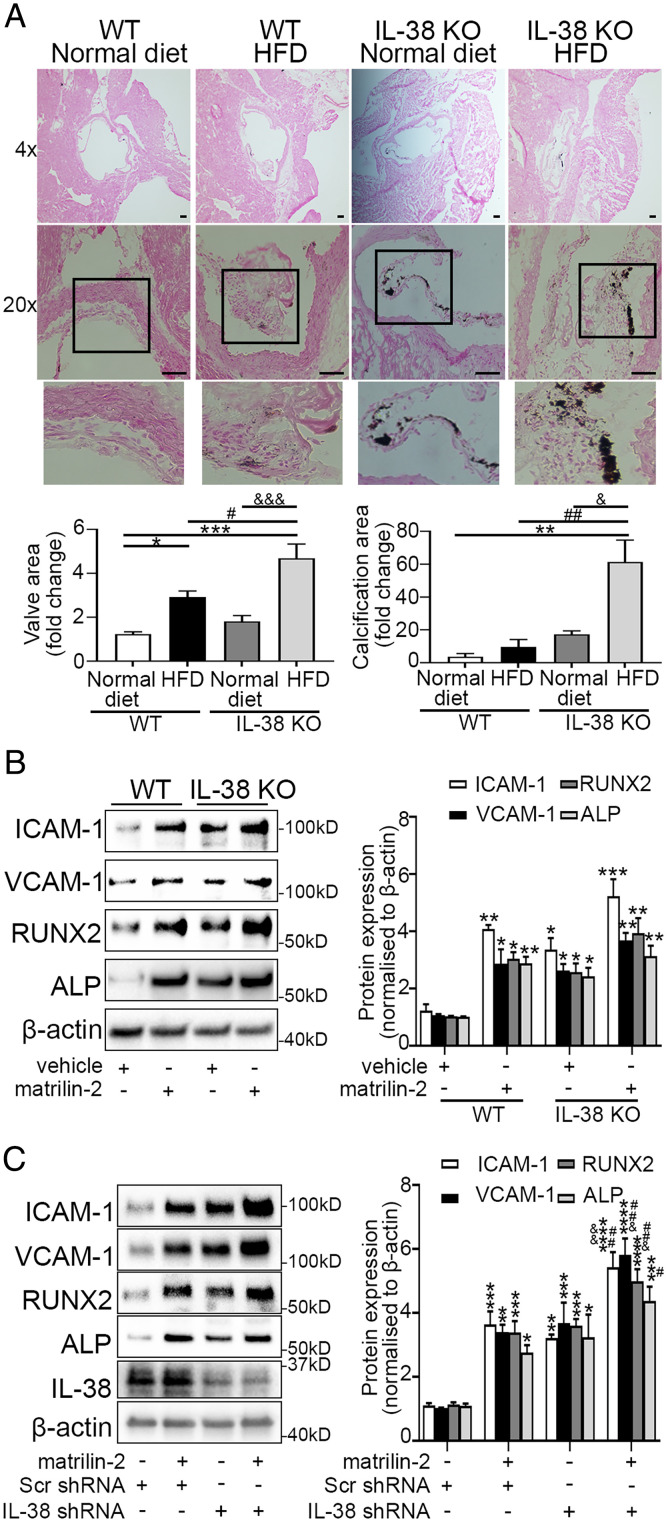Fig. 3.
IL-38 deficiency exacerbates aortic valve lesions in mice. (A) Old mice (16 mo old) were fed a standard diet or HFD for 4 mo. Representative Von Kossa staining images show that IL-38 KO-HFD mice displayed greater aortic valve leaflet thickening and calcification compared to WT-HFD mice. Values are mean ± SEM, n = 3 mice per group. *P < 0.05 and **P < 0.01 versus WT-standard diet; #P < 0.05 and ##P < 0.01 versus WT-HFD; &P < 0.05 and &&&P < 0.001 versus IL-38 KO-standard diet. (Scale bar, 100 µm). (B) Mouse AVICs from WT or IL-38 KO mice were treated with vehicle or matrilin-2 (2 µg/mL) for 72 h. Representative immunoblots (Left) and densitometric data (Right) show that AVICs from IL-38 KO mice exhibited higher spontaneous inflammatory and osteogenic activities in comparison to AVICs from WT mice. In addition, AVICs from IL-38 KO mice had moderately greater responses to matrilin-2 stimulation, but the difference between AVICs from IL-38 KO mice and AVICs from WT mice did not reach statistical significance. Values are mean ± SEM, n = 4 mice per group. *P < 0.05, **P < 0.01 and ***P < 0.001 versus WT vehicle. (C) Human AVICs from non-CAVD valves were pretreated with either scrambled shRNA or IL-38 shRNA prior to matrilin-2 (2 µg/mL) treatment for 72 h. Representative immunoblots (Left) and densitometric data (Right) show that knockdown of IL-38 markedly increased the inflammatory and osteogenic responses to matrilin-2 stimulation. Values are mean ± SEM, n = 4 donors. *P < 0.05, **P < 0.01, ***P < 0.001 and ****P < 0.0001 versus scrambled shRNA alone; #P < 0.05 and ##P < 0.01 versus scrambled shRNA + matrilin-2; &P < 0.05 and &&P < 0.01 versus IL-38 shRNA alone.

